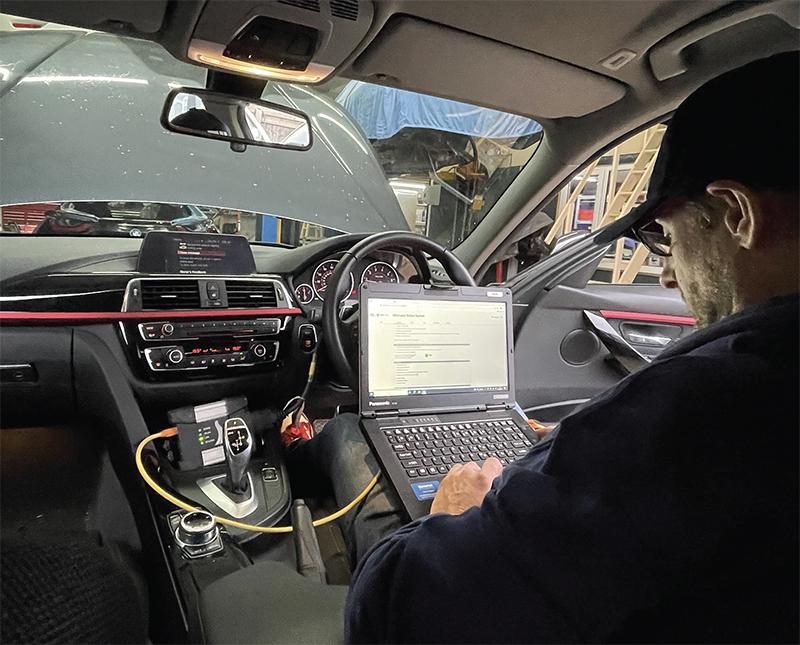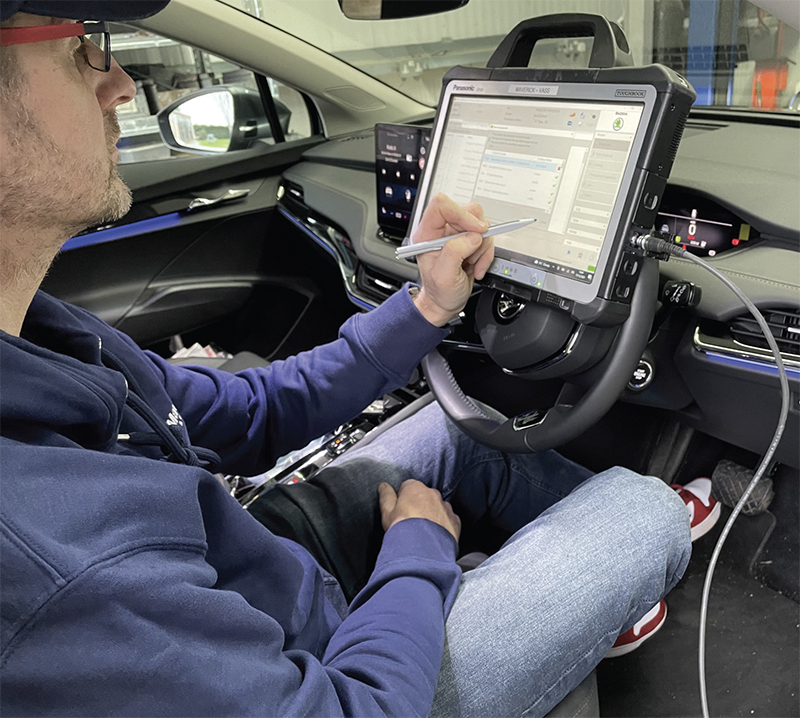
A brief history and a look at the future of vehicle diagnostics by Andy Brooke, managing director of Maverick Diagnostics.
One hundred and thirty seven years after Karl Benz patented the “Benz motorwagen”, I am watching one of my tech support team sitting in front of three large screens, logged into diagnostic PCs around the world, performing vehicle diagnostics and assisting with programming and updating software.
So how have we got to this point of advanced ECU diagnostics and cloud based software and where is it going?
In the 1960s, California already had dire environmental issues. By then, millions of cars were contributing to the smog and the situation was totally out of control, with massive environmental impacts and millions of city dwellers suffering respiratory conditions. In 1970, the United States vehicle emission standard came into force and by 1975 two-way catalytic converters had appeared on US roads and leaded fuel had disappeared. Unfortunately, a catalytic converter that suffers overfuelling becomes a bomb and blows its expensive platinum core out of the exhaust, so a way of controlling fuel efficiently was urgently needed.

Analogue computer diagnostics came in as early as 1969 with VW on their type 3 model and Datsun following later. At this point, they were not exactly sophisticated and only gave the most basic data. In the 1980s, GM introduced their ALDL system, widely thought to be the first true diagnostic capable system. However, early versions were only capable of outputting information and this was the forerunner of OBD1.
In the UK, despite the early 70s fuel crisis, fuel was petrol, as diesel was still regarded as a ‘heavy oil’ for boats and lorries, ‘high performance’ being the catchphrase of the day. Tuning and diagnostic ‘big box’ systems appeared like the ‘crypton tuner’, designed to get the best possible performance from your Weber downdraught 28/36 carburettor.
Environmental turn
The environment wasn’t really discussed in the mid 70s. Then quietly, in Scandinavia, the leaves started to fall from trees…
The cause of this – acid rain – was found to be courtesy of NOx and sulphur dioxide drifting in from Europe. Sweden was the first to take the initiative and quickly put the rest of Europe on track in cutting down industrial pollution and automotive emissions. Enter the 1976 Volvo 265 Lambda Sond which was first sold in California and later in Europe.
Invented by Bosch in the late 60s, the Lambda sensor was capable of measuring the remaining exhaust oxygen content precatalyst. This meant that the fuel injection (K-Jetronic Lambda) would vary the amount of fuel to achieve a perfect mixture or Air Fuel Ratio (AFR) for a catalytic converter.

In 1982, Bosch launched their LHJetronic, a fully digital electronic fuel injection system, capable of reporting digital on-board diagnostic faults and receiving data to clear codes. This, in my opinion, is when modern European diagnostics was born.
Modern diagnostics wasn’t driven purely by emissions regulations. The other major factor was fuel economy and the increasing weight of a modern car and its mod cons. By adding all the gadgets (electric windows, power steering, AC, heated electric seats, sunroof etc) and using a 1980 copper analogue wiring structure, the weight increased by several tonnes.
A digital CAN network cut down the weight of a vehicle’s wiring loom, the drawback being the need to have a fully digital system with each control unit being individually addressed. In simple terms, it is a collection of processors on wheels, and lots of them, reaching up to 70+ on some vehicles. Therefore, you need a modern digital system to programme and diagnose it properly.
Over the last 10 years an economic boon for many workshops and tuners has been failing diesel emissions systems. The writing is on the wall for diesel passenger cars. Beyond EU6, manufacturers cannot meet any further emissions standards. With fuel prices rocketing, even the most hardcore diesel owners are switching to hybrid. I was recently working on a project to spot tampering electronically, including any remapping or fault code table deletions. This has been mandatory in California since 2021 and was estimated to take at least 25 per cent of older diesel vehicles off the UK roads and kill the remapping market overnight.
So, what’s the future?
Automotive technology is on the verge of self-driving vehicles and ADAS is now commonplace. We have hit a pinnacle of ICE engine efficiency at around 35 per cent and manufacturers are focused on developing software and systems which are getting more reliable all the time. Vehicles are actually getting simpler and more reliable with fewer components. An electric motor has one working part, is 90 per cent efficient and has fewer sensors. This, coupled with a reliable small petrol ICE, plus automatic remote updates, make the customer’s experience a better one.
Embrace the technology
Cloud-based, fully guided diagnostic software has advanced dramatically over the last few years and if an aftermarket workshop embraces this and is prepared to invest in training, they will have all the help and assistance to keep them in business for the next 20 years – admittedly with a slightly rewritten business strategy.









